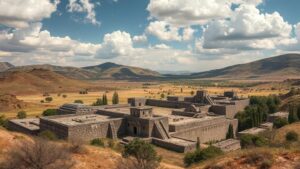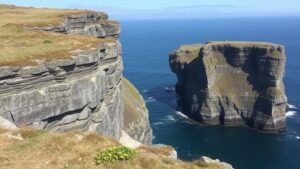Exploring the “Forest of Shifting Leaves,” where movement of the canopy is said to reveal a hidden city in Madagascar.
Exploring the Forest of Shifting Leaves
Deep within the lush, biodiverse landscapes of Madagascar lies an enigmatic region known as the Forest of Shifting Leaves. Not just a marvel of nature, this unique forest is steeped in local legend and mystery. Inhabitants believe that the movement of the canopy reveals a hidden city, rumored to possess ancient secrets and treasures. This article explores the ecological features of this forest, its cultural significance, and the myth surrounding the hidden city.
The Enigmatic Geography
The Forest of Shifting Leaves is located in the northeastern part of Madagascar, approximately 100 kilometers from the capital city, Antananarivo. This region has a tropical climate, characterized by high humidity and abundant rainfall. The forest is part of the larger Andasibe-Mantadia National Park, which is renowned for its unique flora and fauna.
This forest lies within a rich biome that includes towering trees, various endemic species, and a vibrant ecosystem. It covers approximately 155,000 hectares, providing habitat for 69 species of mammals, over 120 species of birds, and myriad plant species.
The Legend of the Hidden City
According to local folklore, the movement of the forest canopy is said to reveal the outline of an ancient city, known as City of the Trees. This phenomenon is described by locals as a mystical experience where the leaves part to form glimpses of stone structures and pathways, leading to speculations about lost civilizations. Similar to the way ancient myths often accompanied natural phenomena, this legend embodies the cultural heritage and spirituality of the Malagasy people.
The lore surrounding this hidden city has attracted explorers and adventurers for centuries. Some even argue that the city could be remnants of the various kingdoms that existed in Madagascar, such as the Merina Kingdom, which thrived during the 19th century. But, no archaeological evidence has confirmed the existence of such a city, making it an intriguing but unproven aspect of Madagascars rich history.
Ecological Significance
The Forest of Shifting Leaves is not just a hub of myth but also a critical area for biodiversity conservation. It serves as a refuge for numerous endangered species, including the unique lemurs that are native to Madagascar. According to the World Wildlife Fund (WWF), approximately 90% of the wildlife found in Madagascar is endemic, meaning it is not found anywhere else in the world.
- The Indri (Indri indri), one of the largest living lemurs, can only be found in these forests. Its distinctive calls echo through the canopy.
- The colorful chameleons, such as Furcifer paruamatus, also thrive here, showcasing the forests rich biodiversity.
Real-World Applications and Conservation Efforts
Conservationists and ecologists recognize the ecological importance of preserving the Forest of Shifting Leaves. As one of the worlds most unique ecosystems, maintaining its biodiversity is crucial for global ecological health. forests preservation can benefit local communities through eco-tourism, offering a sustainable economic model while promoting education about this remarkable environment.
Several organizations, such as Madagascar National Parks, are actively involved in conservation efforts. In recent years, there has been a notable increase in eco-tourism initiatives that educate visitors about the areas ecological importance and local culture while respecting the delicate balance of this ecosystem.
Conclusion
The Forest of Shifting Leaves offers a fascinating intersection of mythology, ecology, and human ingenuity. While the legend of the hidden city may remain shrouded in mystery, it highlights the profound connection between nature and culture in Madagascar. Protecting this extraordinary forest is crucial not only for its biodiversity but also for preserving the rich traditions and stories of the Malagasy people.
If you are interested in exploring this ecological treasure, consider participating in guided tours that promote responsible tourism. Engaging with local guides can deepen your understanding of the forests wonders and contribute to its ongoing preservation.



